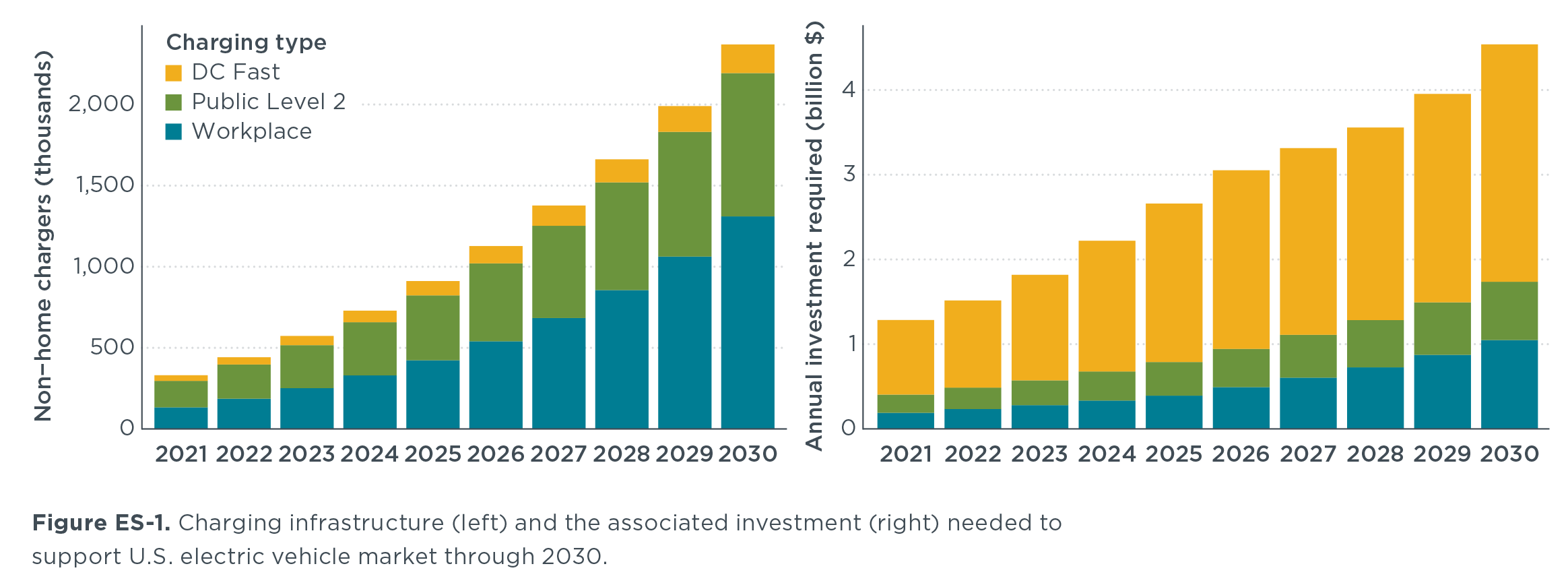Colorado charging infrastructure needs to reach electric vehicle goals
White paper
Charging up America: Assessing the growing need for U.S. charging infrastructure through 2030
This paper assesses growing home, workplace, and public charging needs in the United States through 2030, incorporating local market trends, evolving charging technology and behavior, household characteristics, and home charging availability. The charging analysis is also integrated with bottom-up charging costs to estimate the associated infrastructure investment required to support the electric transition.
To support an electric vehicle stock of 26 million in the United States in 2030, public and workplace charging will need to grow from approximately 216,000 chargers in 2020 to 2.4 million by 2030, including 1.3 million workplace, 900,000 public Level 2, and 180,000 direct current fast chargers. The charging infrastructure network will also need to provide greater coverage for a broader set of drivers. About a million chargers will be needed at multiunit dwellings to support apartment residents and charging will need to grow at greater rates in many rural areas and across the Midwest and South. Lower-income communities will need persistent investments, amounting to about 30% of chargers and charging investments through 2030, to ensure equitable infrastructure access.
Although most electric vehicle charging is conveniently done overnight with home chargers, the investments needed for public-access charging infrastructure will be substantial. The associated 2021–2030 charging investments are $28 billion for public and workplace chargers, including $15 billion for charger installation labor. Direct current fast chargers are 7% of these chargers, provide 57% of the charging energy, and represent 66% of the costs, reinforcing the need to install inexpensive and convenient home and workplace charging. Near-term charging needs are being covered by public funding, utility investments, Volkswagen’s dieselgate settlement funds, and other private companies. More sustained long-term funding is needed, especially where investments through 2020 have been limited.

